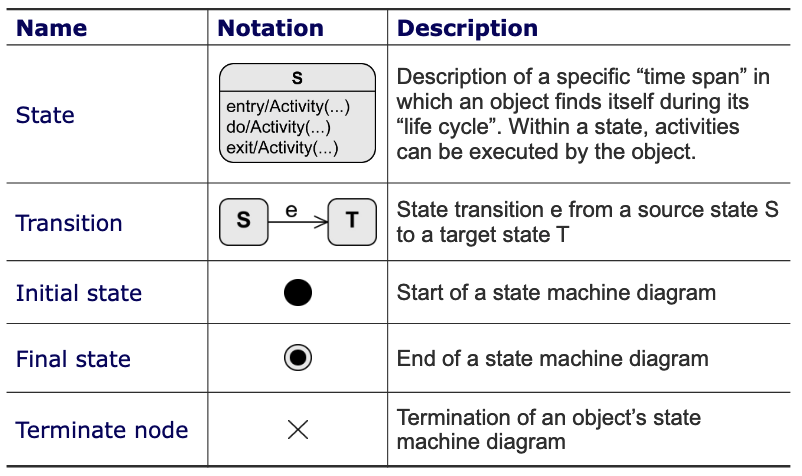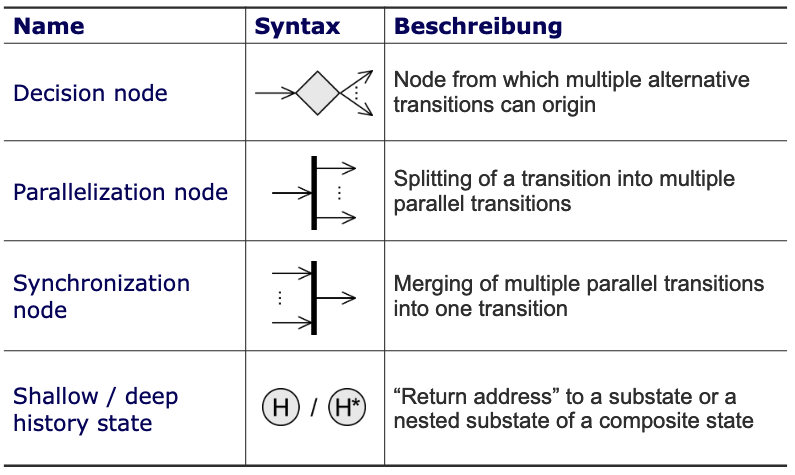Recap: A Simple State
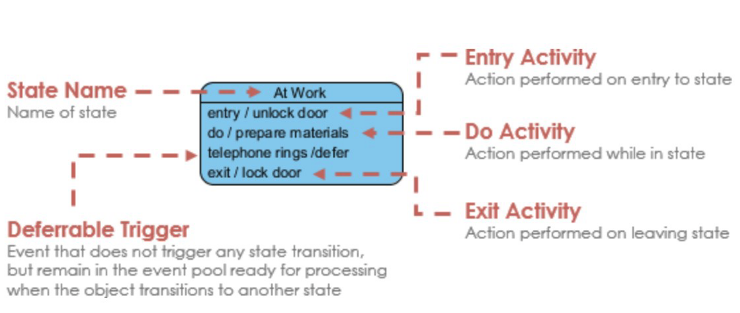
Composite State
Also known as complex state or nested state.
It contains other states, substates.
- Only one of its substates is active at any point in time.
Arbitrary nesting depth of substates.
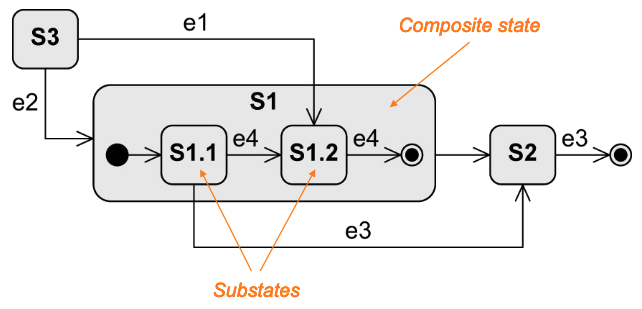
Entering a Composite State
Transition to the boundary, the initial node of the composite state is activated:
| Event | State | Executed Activities |
|---|---|---|
| „Beginning“ | S3 | |
| e2 | S1/S1.1 | a0-a2-a3-a4 |
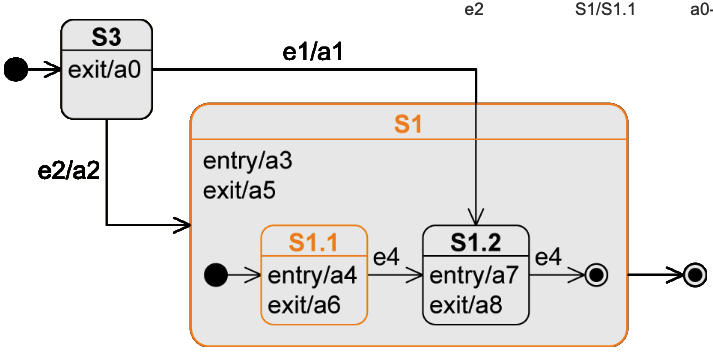
Transition to a substate, substate is activated:
| Event | State | Executed Activities |
|---|---|---|
| „Beginning“ | S3 | |
| e1 | S1/S1.2 | a0-a1-a3-a7 |
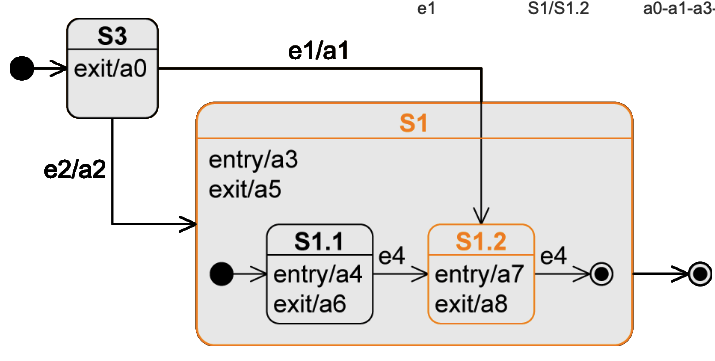
Exiting from a Composite State
Transition from a substate:
| Event | State | Executed Activities |
|---|---|---|
| „Beginning“ | S1/S1.1 | a3-a4 |
| e3 | S2 | a6-a5-a2-a1 |
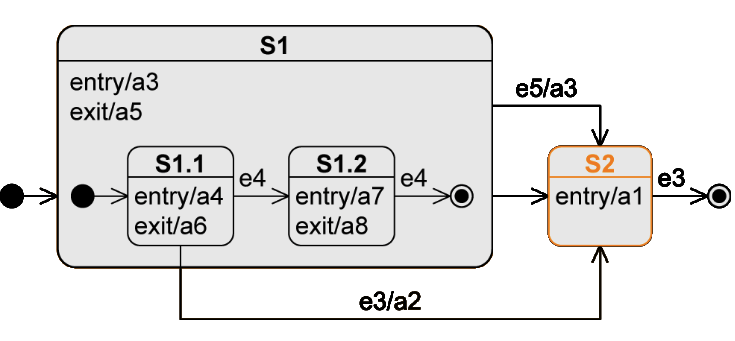
Transition from the composite state:
Note that no matter which substate of S1 is active, as soon as e5 occurs, the system changes to S2.
| Event | State | Executed Activities |
|---|---|---|
| „Beginning“ | S1/S1.1 | a3-a4 |
| e5 | S2 | a6-a5-a3-a1 |
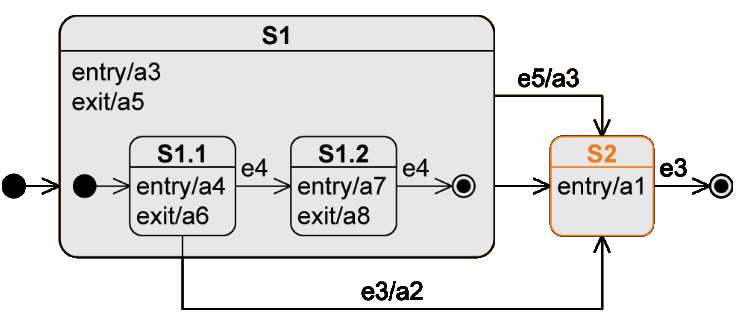
Completion transition from the composite state:
| Event | State | Executed Activities |
|---|---|---|
| „Beginning“ | S1/S1.1 | a3-a4 |
| e4 | S1/S1.2 | a6-a7 |
| e4 | S2 | a8-a5-a1 |
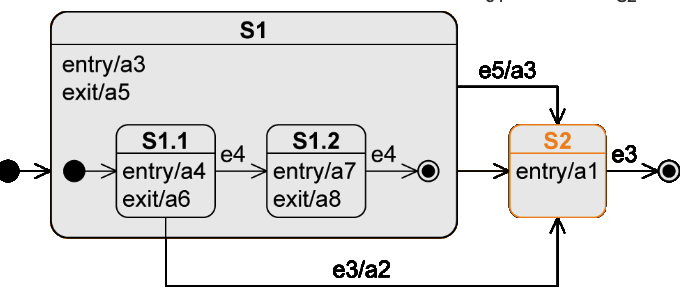
Parallelisation and Synchronisation Node
Parallelisation node
- Pseudostate.
- Splits the control flow into multiple concurrent flows.
- 1 incoming edge.
- >1 outgoing edges.
Synchronisation node
- Pseudostate.
- Merges multiple concurrent flows.
- >1 incoming edges.
- 1 outgoing edge.

Orthogonal State
When a composite state is divided into two or more regions separated by a dashed line.
One stage of each region is always active at any point in time, i.e.: concurrent substates.
Entry: transition to the boundary of the orthogonal state actives the initial states of all regions.
Exit: final state must be reached in all regions to trigger completion event.

Submachine State (SMS)
To reuse parts of state machine diagrams in other state machine diagrams.
Notation: state:submachineState.
As soon as the submachine state is activated, the behaviour of the submachine is executed. This corresponds to calling a subroutine in a programming language.
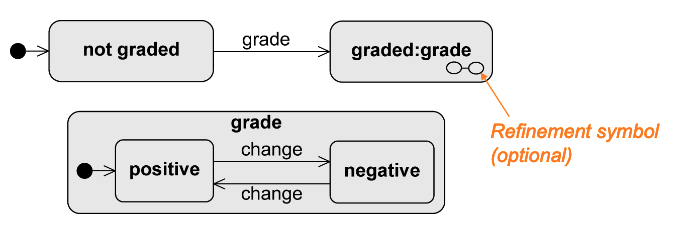
History State

It remembers which substate of a composite state was the last active one. It also activates the “old” substate and all entry activities are conducted sequentially from the outside to the inside of the composite state.
Exactly one outgoing edge of the history state points to a substate which is used if:
- the composite state was never active before.
- the composite state was exited via the final state.
Shallow history state restores the state that is on the same level of the composite state (H).
Deep history state restores the last active substate over the entire nesting depth (H*).
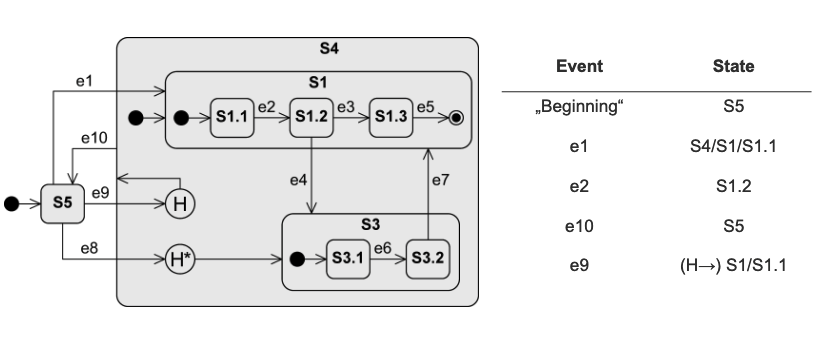
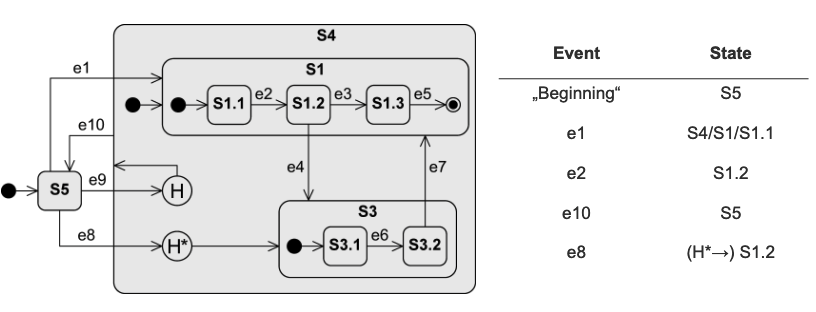
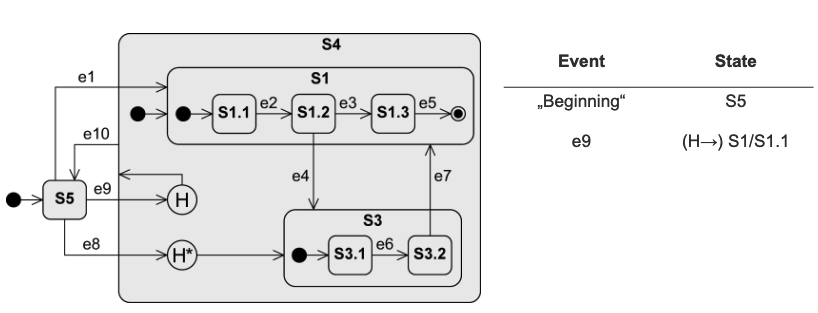
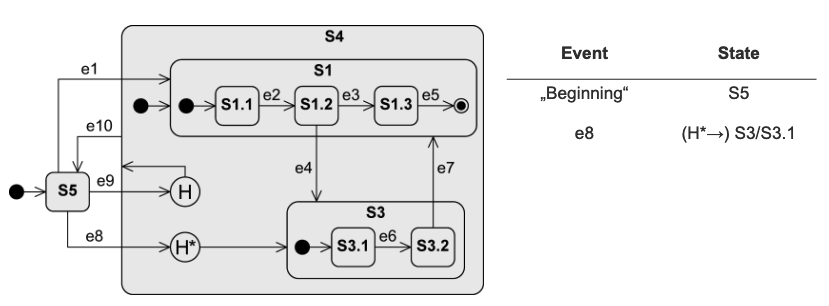
Entry and Exit Points
Encapsulation mechanism:
- A composite state shall be entered or exited via a state or other than the initial and final states.
- The external transition must/need not know the structure of the composite state.
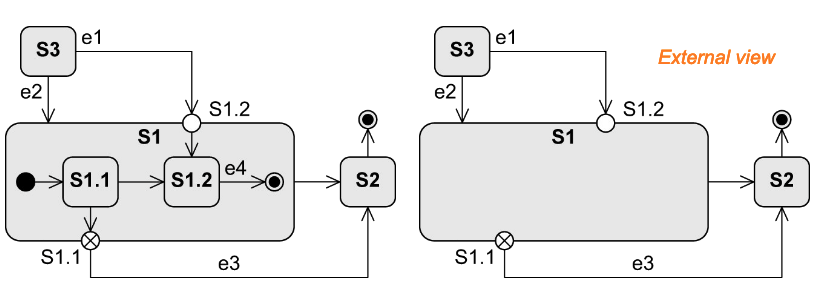
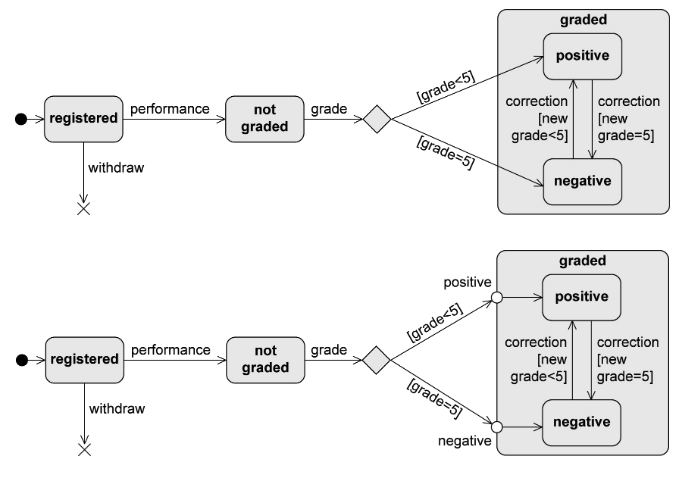
Summary (Notation Elements)
